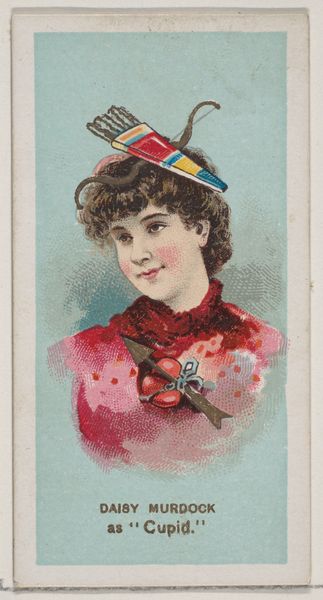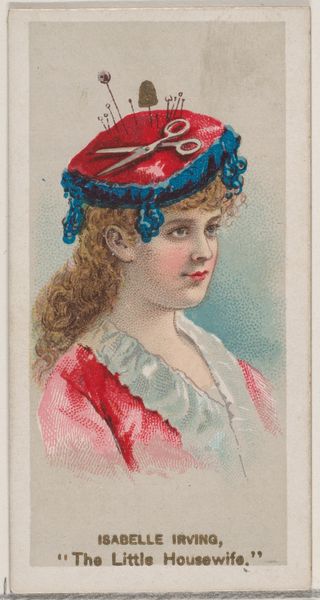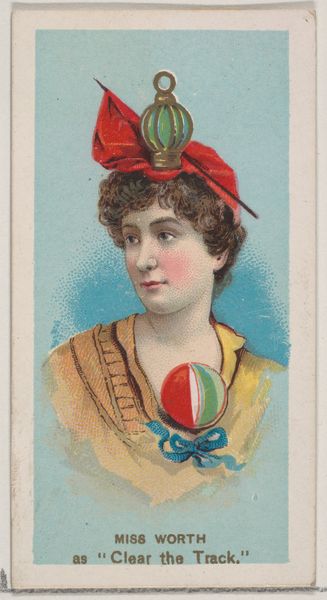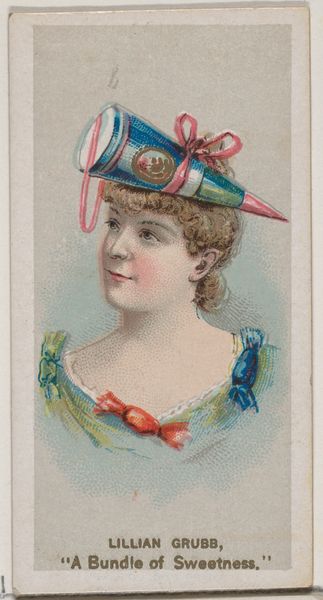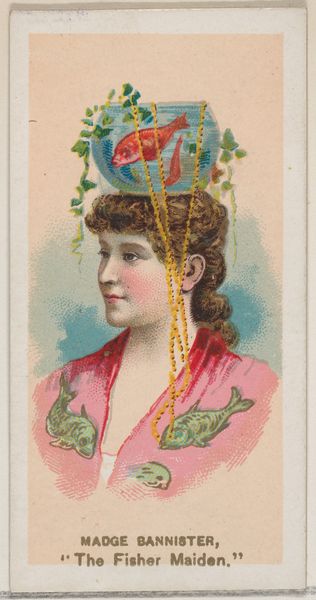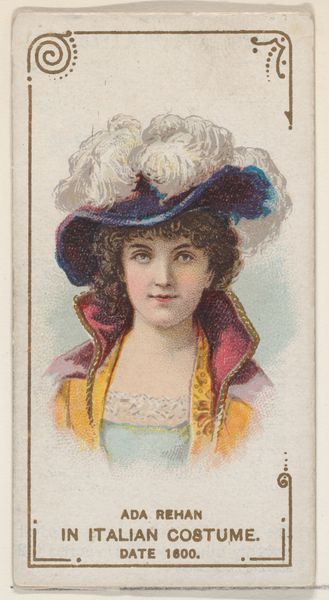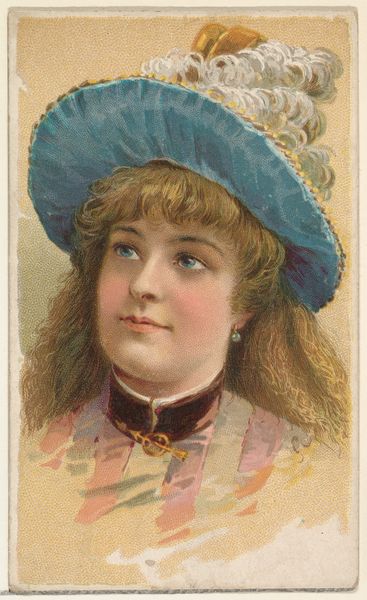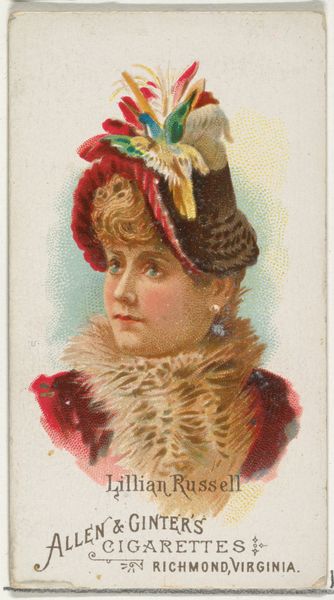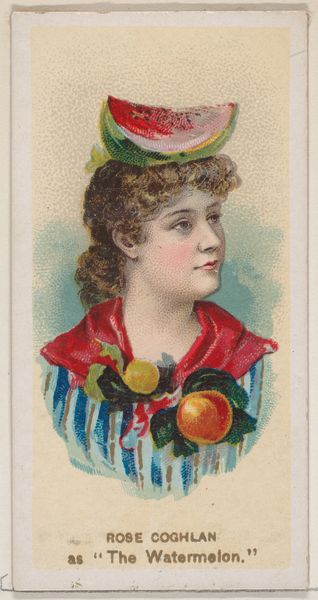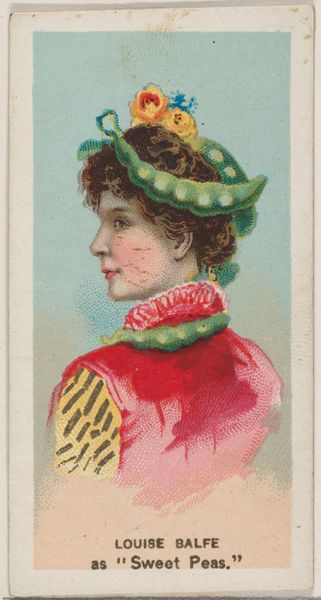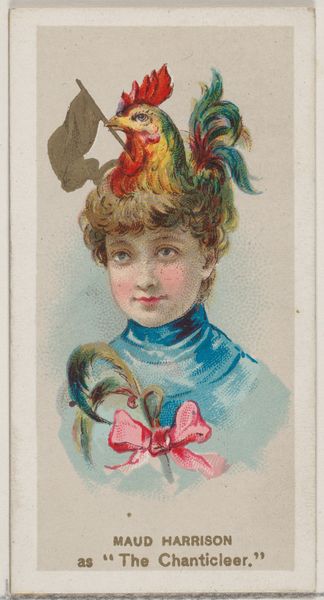
Mme. Rhea as "Queen of the Ball," from the series Fancy Dress Ball Costumes (N73) for Duke brand cigarettes 1889
0:00
0:00
drawing, coloured-pencil, print
#
portrait
#
drawing
#
coloured-pencil
#
fancy-picture
# print
#
coloured pencil
#
watercolour illustration
#
decorative-art
Dimensions: Sheet: 2 3/4 x 1 1/2 in. (7 x 3.8 cm)
Copyright: Public Domain
Curator: Let's take a look at this curious object from 1889. It’s one of a series of “Fancy Dress Ball Costumes” (N73) made for Duke brand cigarettes. Here we see Mme. Rhea as “Queen of the Ball." The piece, created through drawing and colored pencil work, functions primarily as a print. Editor: My immediate reaction is one of playful bewilderment. The imagery is… unexpected. A woman, rendered in a very straightforward portrait style, has a bizarre collection of objects balanced precariously on her head. It feels almost surreal, this odd juxtaposition. Curator: These cards were originally included in packs of cigarettes, intended to stiffen the packs and, of course, to promote collecting. The choice of a public figure like Mme. Rhea also carries implications about who is consuming these cigarettes and how the brand imagines its consumers. Editor: Exactly. It's interesting to consider the societal context: late 19th century, burgeoning consumer culture, and the ways women were used—or, arguably, instrumentalized—to sell products. Here we have a portrait of an actress, "Queen of the Ball," used to brand a pack of cigarettes, appealing to the upper-class while subtly reinforcing patriarchal norms. Note the objects “crowning” her—playful, but still objects for entertainment. Curator: There is the interesting detail of the attire and associated objects. Notice the specific props referencing 'ball': not just a bejeweled crown, but actual toys—small colored balls, a child's bat—implying a type of playfulness. The execution here is fairly delicate despite its commercial purpose. The detail is remarkable. Editor: The entire ensemble has that peculiar fin-de-siècle mix of exuberance and almost decadent artificiality. But I agree, the technical execution itself is masterful. And it forces us to reflect on how notions of beauty and power were conflated and commodified during this era, subtly shaping both consumer behavior and cultural values. Curator: These small cigarette cards provide valuable insight into how consumer culture intersected with social identity. The seemingly harmless image of “Queen of the Ball” turns out to be loaded with all sorts of social and political meanings. Editor: Right! And in understanding its historical context, we gain deeper insight into how this art reveals intersections of gender, power, and consumerism at a crucial juncture in our history.
Comments
No comments
Be the first to comment and join the conversation on the ultimate creative platform.
